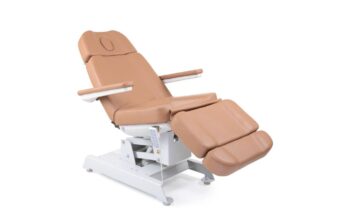Dental implants are meant to last a lifetime when positioned and maintained correctly. Through osseointegration, the titanium posts join the jawbone and form a strong base for dental implants. Selecting premium implant components, such as the crown and abutment, guarantees that your restoration will last over many years. With regular dental checkups and proper oral cleanliness, many dental implants can last up to 20 years or more. They offer a permanent remedy for tooth loss.
Robust Cover Screw Connectivity
As a dentist performing dental implants treatment in Burnaby explains, protecting the internal connection where the abutment connects makes the cover screw a crucial component of a dental implant system. By screwing into the implant body, this cover screw forms a tight barrier that keeps food and bacteria out. Since titanium gradually combines with bone cells, it is the ideal material for cover screws. A snug fit is guaranteed if the screw is manually tightened to 30 Ncm using a torque wrench. For added security, you can optionally insert plastic screw caps. Cover screws shield the delicate implant connections.
Choices for Screw-Retained or Cement-Retained Crowns
Retained screws or dental cement can hold the dental crown in place, restoring the visible portion of the tooth. Faster placement and reduced hardware are two benefits of cemented crown connectors. Still, recovering the restoration is more challenging. Repairs are easier to access with screw-retained crowns, and there is less chance of cement buildup. Additionally, the screw access hole is shielded by the abutment. These two choices can be connected precisely thanks to computer-aided design/computer-aided manufacturing (CAD/CAM) technology. With your dentist, go over the benefits and drawbacks of each approach.
Enhance Appearance using Zirconia Adhesions.
Dental implant restorations should appear seamless if the abutment material closely resembles the color of natural teeth. Compared to titanium metal, zirconia is more transparent and whiter. These ceramic abutments more closely resemble the way light refracts in real teeth. The lifelike crowns and tissue-colored zirconia don’t look any different from natural teeth. Zirconia also has the extra benefit of being incredibly biocompatible and non-corrosive. Custom zirconia abutments improve aesthetics with the most lifelike-looking implant crowns, although they are more expensive than titanium.
Avoid Peri-Implantitis with Proper Connections
Peri-implantitis is serious gum inflammation caused by bacterial buildup around dental implants. If untreated, the condition leads to irreversible bone loss. To prevent infection, the cover screw and abutment connection must create a tight seal against the implant plate. Even microscopic gaps enable bacteria entry. Zirconia components fuse better than titanium or steel parts. Symptoms include red, puffy gums, bad breath, and pus. Schedule frequent dental exams so special tools can be used to gauge unhealthy pockets around implants. Stop early-stage peri-implantitis before major damage occurs.
Optimal Torque Values for Cover Screws
Applying the manufacturer-recommended torque value when manually tightening cover screws is imperative for achieving a waterproof seal. Excessive torque can fracture the screw or strip the internal threads of the implant. Insufficient torque leads to gaps that allow bacteria-rich fluids inside. Research on Straumann dental implants found the optimal torque for their SynOcta gold-hue cover screws was 35 Ncm. Other systems may specify different torque settings. Use a calibrated torque wrench designed specifically for dental implants to tighten cover screws to the precise value manually. This ensures total surface contact for a contamination-proof barrier.




